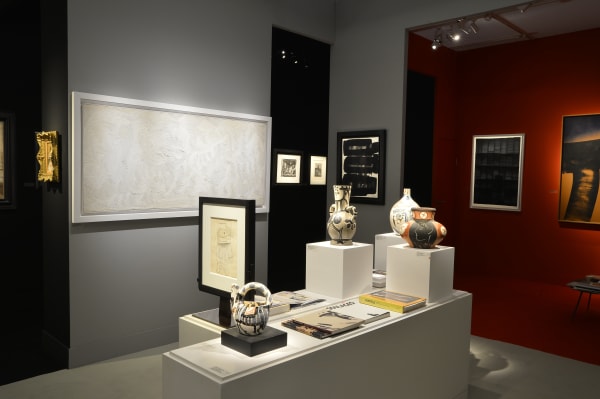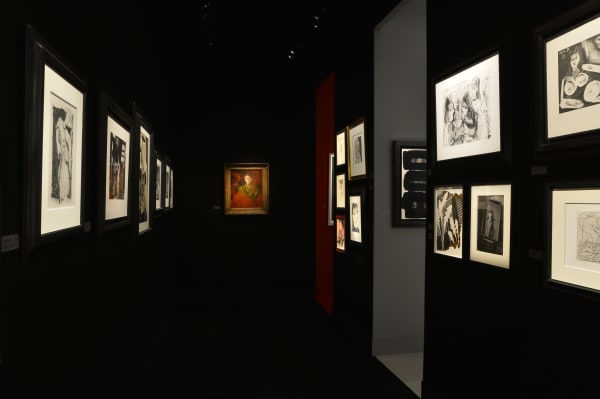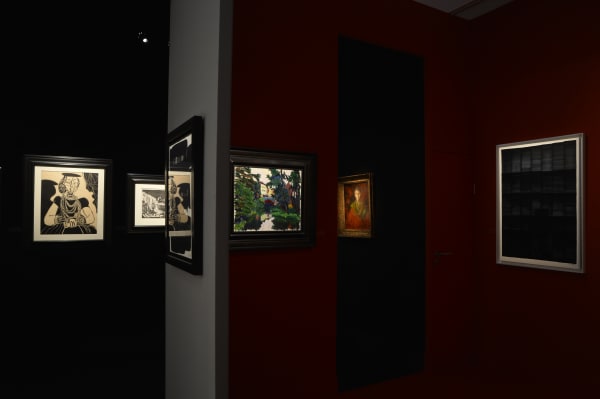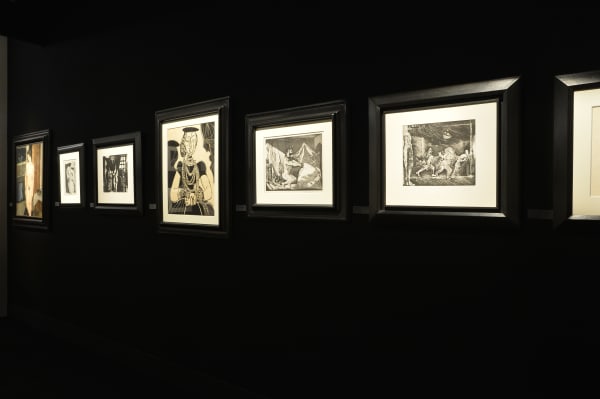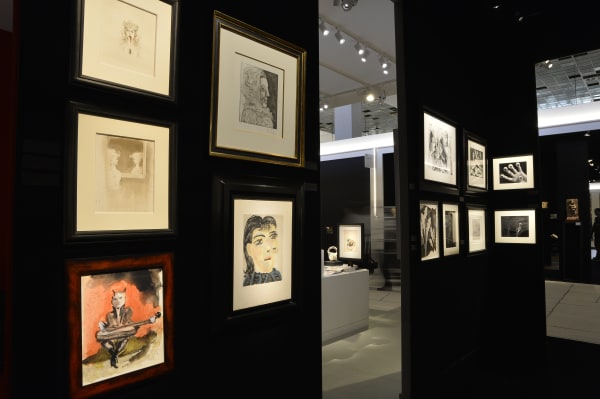Galerie Jean-François Cazeau, located in the Marais district of Paris since 2009, builds bridges between the Modern Masters and post-war art on both sides of the Atlantic, while opening up to contemporary art.
This year, in its sixth year at BRAFA, the gallery presents an exhibition that highlights the links between the avant-gardes of the first part of the twentieth century and Post-War art, while remaining true to its characteristic eclecticism.
The presentation contrasts the beginnings of geometic and orphic abstraction, and the lyrical abstraction of the post-war period, which grew out of these movements. Initially, the gallery highlights artists who may have inspired the European Post-War movement, such as André Masson, Serge Charchoune, Fernand Léger and Auguste Herbin. A special focus is placed on surrealism, a movement that would later inspire abstraction, and in particular the works of André Masson, creator of automatic drawing. To celebrate the centenary of the birth of Surrealism, the gallery has brought together several works, from Delvaux to Max Ernst and André Masson. One of the key works in the show, André Masson's La Ville abandonnée, a large Cubist drawing once belonging to Messens, a leader of Belgian Surrealism, will subsequently be exhibited at the Palais des Beaux-Arts de Bruxelles, as part of the exhibition Histoire de ne pas rire. Surrealism in Belgium. Surrealist photography is represented by the photomontages and photocollages of Pierre Jahan, one of the pioneers of French photography and a friend of Jean Cocteau.
Works by Pierre Soulages - who passed away last year - Serge Charchoune, Jean
Fautrier, Hans Hartung and T'ang Haywen illustrate post-war lyrical abstraction. Two gouaches by Soulages show two different periods in the artist's career: the '50s and the '70s.
Paintings by Serge Charchoune, an artist who spanned the 20th century, from cubism to abstraction, confront the different visions of his work, from color to monochrome, but always focused on gesture.
T'ang Haywen's highly poetic inks continue the great tradition of Chinese ink painting. The Musée Guimet will devote a retrospective to the artist in spring 2024, highlighting the work of this great master of ink, which the gallery will also be exhibiting from June 1 to July 31, 2024.
BRAFA 2024
Brussels Expo/ Heysel, 28 January - 4 February 2024

